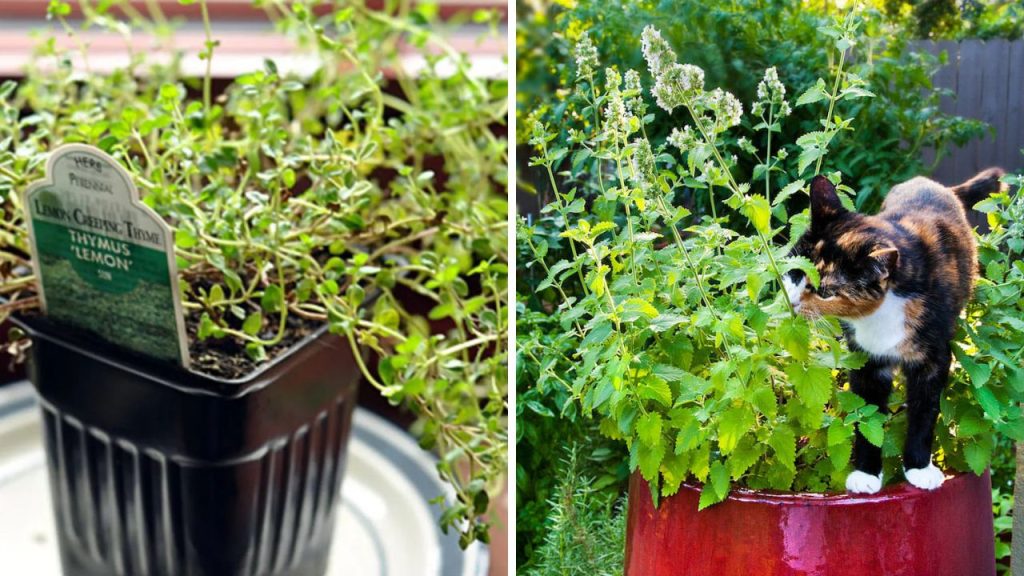Weed barriers are a gardener’s best friend, helping keep those pesky plants at bay while allowing your flowers and veggies to thrive. From traditional landscape fabric to creative DIY options, there are plenty of ways to tackle weeds without harsh chemicals. Here’s a roundup of 17 awesome weed barrier ideas to help you get started on your garden project!
Living Mulch Techniques
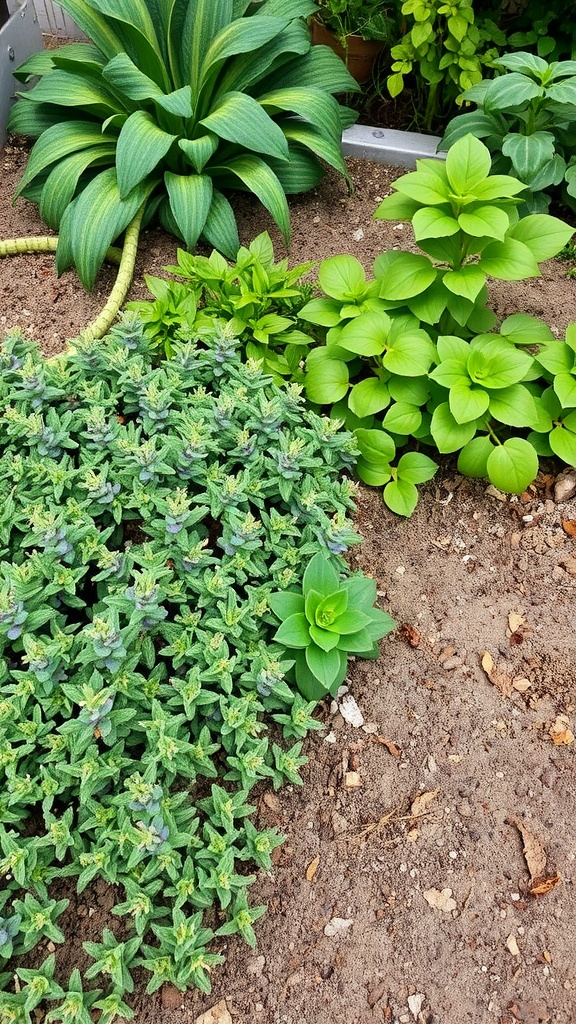
Living mulch is a fantastic way to keep your garden thriving while minimizing weeds. The image shows a vibrant mix of plants that can serve as living mulch, creating a natural barrier against unwanted growth.
The green plants in the picture, with their lush leaves, offer great coverage and nutrients for the soil. This not only helps in suppressing weeds but also enhances soil health. Incorporating plants like these can add beauty to your garden space while being functional.
Using living mulch is simple. Start by selecting low-growing plants that thrive in your specific climate. Once established, these plants will spread out, creating a protective layer. This aids in moisture retention and prevents erosion, making it a win-win for your gardening efforts.
Recycled Newspaper Layers
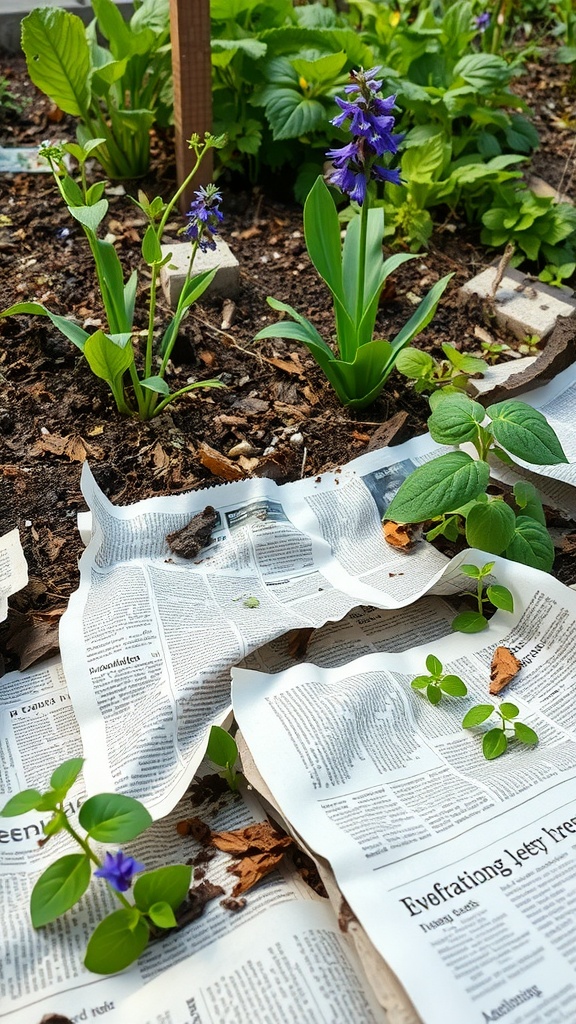
Using recycled newspaper as a weed barrier is a smart and eco-friendly choice for any garden. The image shows a garden bed where layers of newspaper are laid down, letting new plants thrive while keeping weeds at bay.
Newspaper acts as a great mulch. It blocks sunlight, which prevents weed seeds from sprouting. At the same time, it breaks down over time, enriching the soil. It’s a win-win for both your plants and the environment.
In the image, you can see vibrant green plants poking through the layers of newspaper. This visual shows how effective this method can be. Plus, it’s a budget-friendly option that many gardeners can easily implement.
To set this up, simply gather a stack of old newspapers. Lay them flat on the soil, overlapping pieces to cover the entire area. You can wet the newspaper slightly to help it stay in place. Then, add a layer of mulch on top for added protection. This simple technique can lead to a healthier garden.
Cardboard as an Eco-Friendly Option
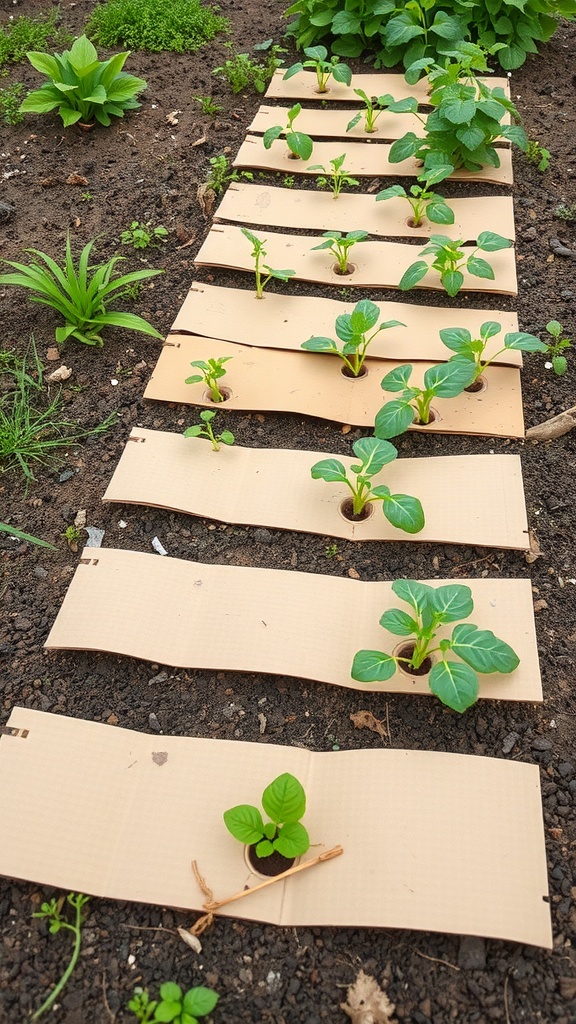
Using cardboard in your garden offers a simple and effective way to battle weeds while caring for the environment. The image showcases seedlings peeking through holes in strips of cardboard laid out in neat rows. This method not only suppresses weed growth but also helps retain soil moisture.
Cardboard is a free and biodegradable material. As it breaks down, it enriches the soil with organic matter. Simply layer the cardboard on the ground before planting, making holes for your plants to emerge. This technique creates a natural barrier, keeping unwanted weeds at bay.
Moreover, it’s a fun and creative way to recycle! Instead of tossing out old boxes, give them a second life in your garden. It’s practical and good for Mother Earth. Plus, you’ll love seeing your plants thrive in this eco-friendly setup.
Coconut Coir Matting Benefits
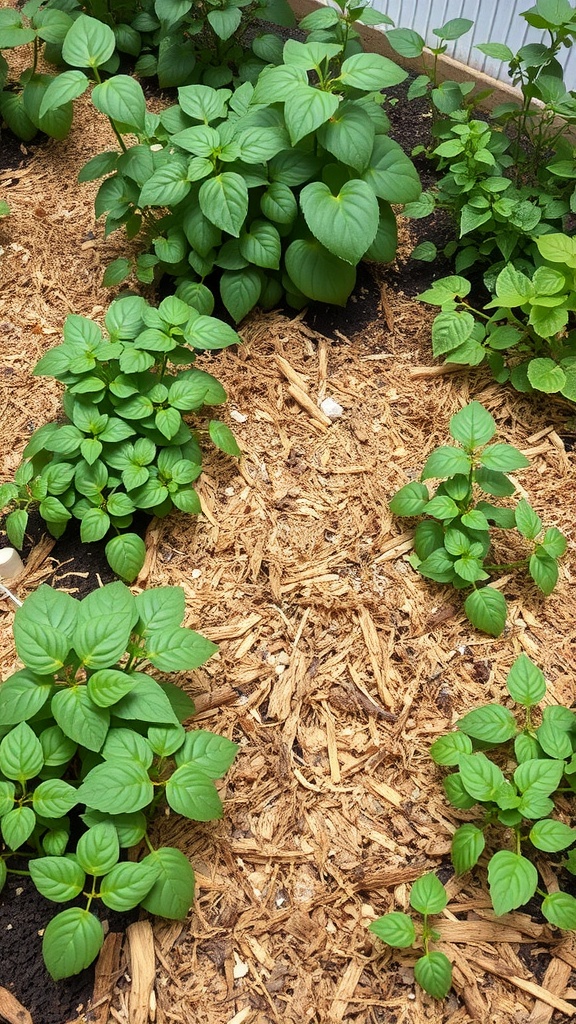
Coconut coir matting offers a fantastic way to support your garden while protecting against weeds. This natural product comes from the husks of coconuts and is both eco-friendly and effective.
One of the key benefits of coconut coir matting is its ability to retain moisture in the soil. This is especially important for young plants, as it helps them thrive without excessive watering. The image showcases lush green plants surrounded by coir matting, highlighting how well it can integrate into your garden.
Another advantage is its biodegradability. Unlike plastic barriers that can harm the environment, coir breaks down over time. This means it not only serves its purpose but enriches the soil as it decomposes, promoting healthy plant growth.
Finally, using coconut coir matting can help improve soil structure. It allows air and nutrients to penetrate better, which is crucial for robust roots. This matting choice is a win-win for both your garden’s health and sustainability.
Wood Chips for Natural Aesthetics

Wood chips can add a warm and inviting touch to any garden or pathway. In the image, you see a well-laid path of wood chips surrounded by vibrant flowers, creating a natural and stunning look.
This choice not only looks great but also serves practical purposes. Wood chips help suppress weeds, retain moisture, and improve soil quality as they decompose. The earthy tones of the wood blend beautifully with the bright blooms, enhancing the overall aesthetic of the landscape.
Creating a path with wood chips is simple and cost-effective. Just layer the chips over a weed barrier fabric to keep unwanted plants at bay. Whether you’re designing a casual garden or a more formal setting, wood chips offer versatility and charm.
Natural Fiber Weed Barriers
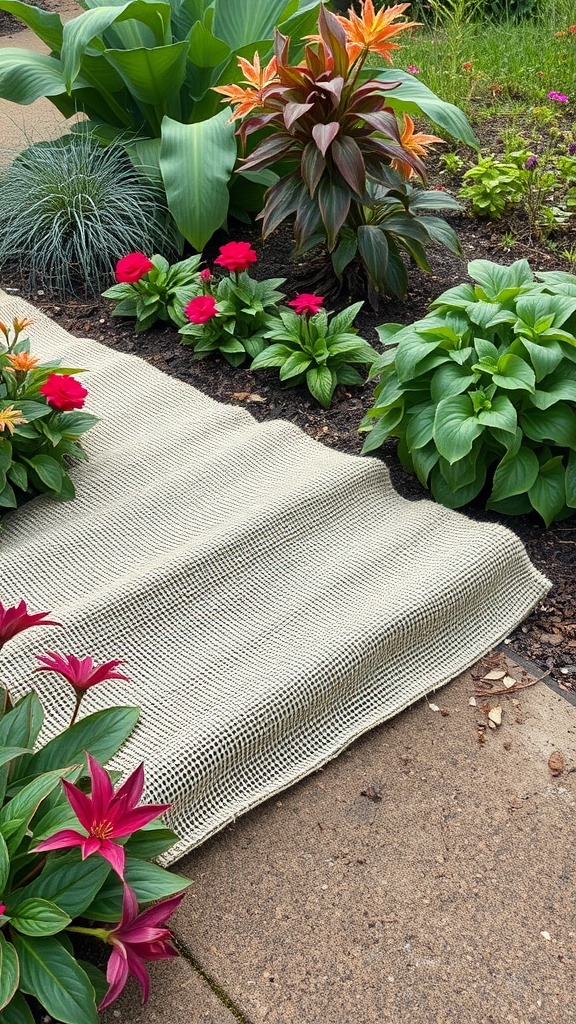
Natural fiber weed barriers offer a fantastic way to keep your garden looking tidy while being environmentally friendly. In the image, you can see a woven barrier laid down along a garden path, surrounded by vibrant flowers and lush greenery. This setup not only prevents weeds from taking hold but also allows water and nutrients to reach the soil.
Using materials like jute or coconut coir is a great choice. These fibers decompose over time, enriching the soil and supporting healthy plant growth. They break down naturally, so you don’t have to worry about disposing of plastic materials that can harm the environment.
Setting up a natural fiber weed barrier is simple. Just lay the material on the soil, overlapping edges to ensure complete coverage. You can then plant flowers or vegetables around it. The visual appeal of the garden enhances while keeping unwanted weeds at bay.
This method is not just practical; it adds a rustic charm to your garden. With a natural fiber barrier, you’re taking a step toward a greener gardening approach, making it a win-win situation for both you and your plants.
Rubber Mulch for Durability
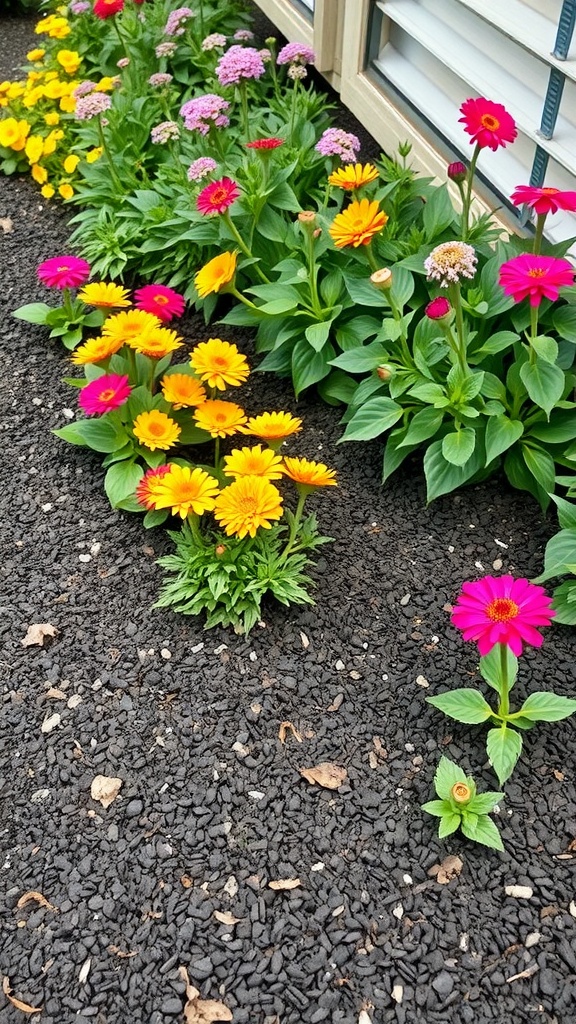
Rubber mulch is a fantastic option for any garden or landscaping project. In the image, you can see vibrant flowers thriving against a backdrop of black rubber mulch. This material not only looks good but also serves a purpose.
One of the main benefits of rubber mulch is its durability. Unlike traditional wood mulch, rubber doesn’t break down over time. This means you won’t need to replace it as often, saving you both time and money. Plus, it helps retain moisture in the soil, which can keep your plants healthy.
Another great feature is its ability to control weeds. The thick layer of rubber acts as a barrier, discouraging weeds from sprouting. This way, your beautiful flowers can take center stage without competition.
Overall, rubber mulch combines functionality with aesthetics, making it a smart choice for creating stunning garden spaces.
Plastic Landscape Fabric
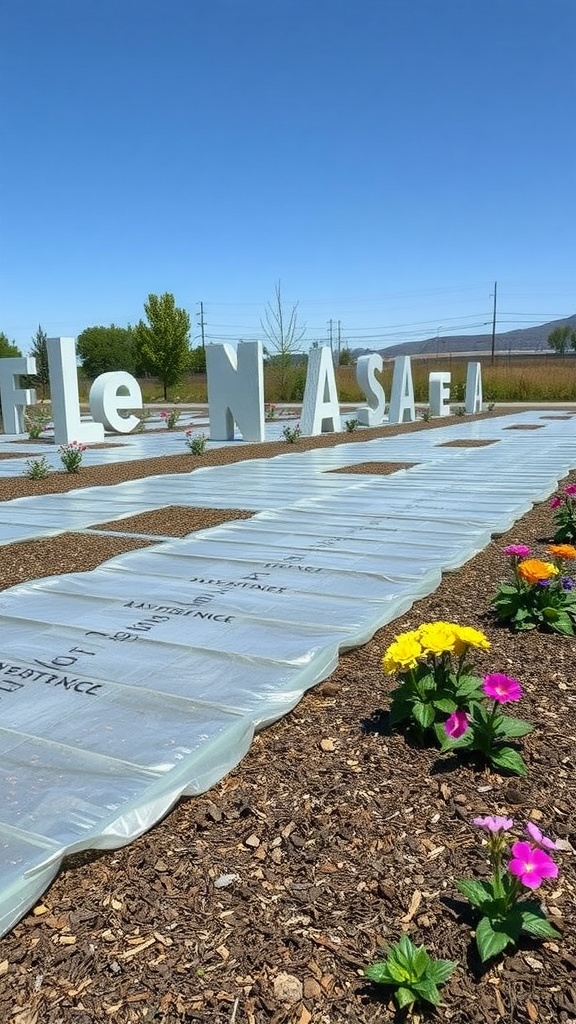
Plastic landscape fabric is a handy tool for gardeners looking to keep their flower beds neat and tidy. In the image, you can see sections of transparent fabric laid out in a garden space, helping to control weeds while allowing moisture to reach the plants below.
The clear fabric allows sunlight to penetrate, which can be beneficial for some plants. It’s often used in combination with mulch for added protection against unwanted growth. The colorful flowers at the edges bring a pop of life to the otherwise functional setup.
Using plastic landscape fabric can simplify garden maintenance. By keeping weeds at bay, you spend less time pulling them out and more time enjoying your garden. Just remember to check the fabric regularly to ensure it remains effective throughout the growing season.
Stone or Gravel as a Barrier
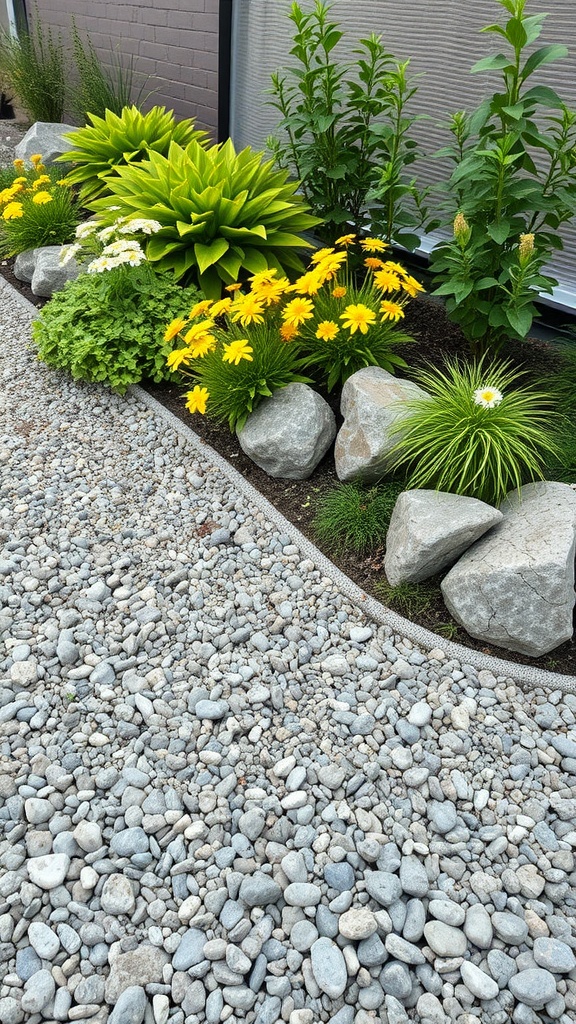
Using stone or gravel as a weed barrier is a clever way to create a clean and stylish landscape. The image shows a beautiful garden bed with vibrant flowers and lush greenery, surrounded by smooth gravel. This setup not only looks great but also helps prevent weeds from taking over.
Gravel acts as a natural barrier, blocking sunlight from reaching weed seeds in the soil. It’s easy to maintain and doesn’t require the same effort as traditional mulch. Plus, it allows water to flow through and reach the plants, keeping them healthy.
Incorporating larger stones or boulders can add a rustic touch while providing extra protection. This design ensures that your flower beds stay neat, allowing the colors and textures of your plants to stand out. Consider using different sizes and colors of stones for a more dynamic look.
Biodegradable Fabric Options
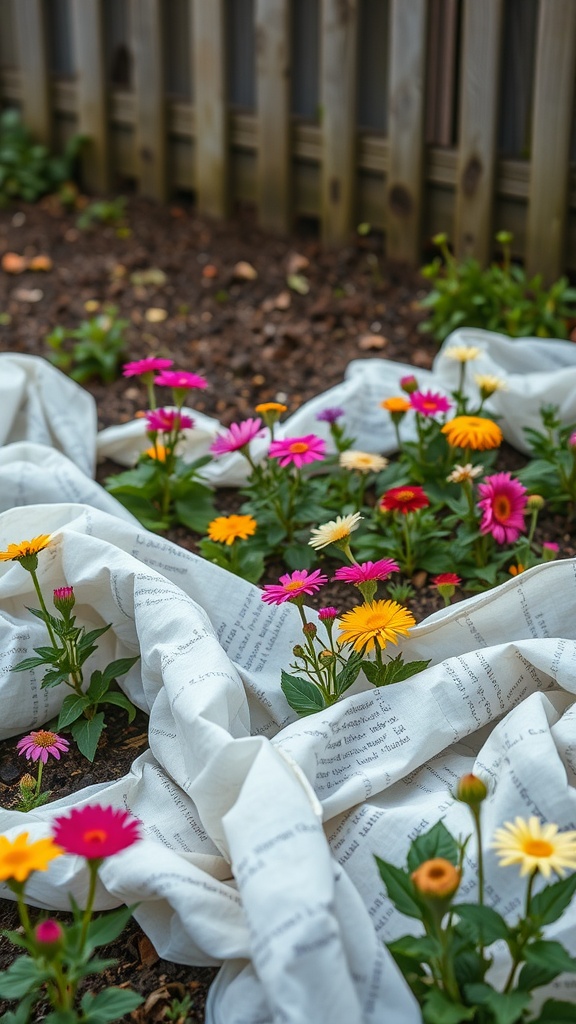
When it comes to keeping weeds at bay, biodegradable fabric options can be a game changer. The image here shows a beautiful garden where flowers peek through a soft, white fabric. This fabric is not just decorative; it plays a crucial role in weed prevention while being kind to the earth.
Using biodegradable fabric is a smart choice for gardeners who want to maintain a healthy environment. These fabrics decompose naturally over time, returning nutrients to the soil. Unlike plastic options, they won’t harm the ecosystem.
In the picture, the fabric is gently draped around colorful blooms. This setup not only prevents weed growth but also adds a subtle touch of style to the garden. The flowers look vibrant and lively, thriving in their protected space.
Choosing the right biodegradable fabric can depend on your specific needs. Some fabrics are designed to allow water and nutrients to penetrate while blocking sunlight for weeds. This balance is key to keeping your garden flourishing.
So, if you’re thinking about weed barriers, consider going biodegradable. It’s a simple step that benefits both your garden and the planet.
Sustainable Mulching with Straw
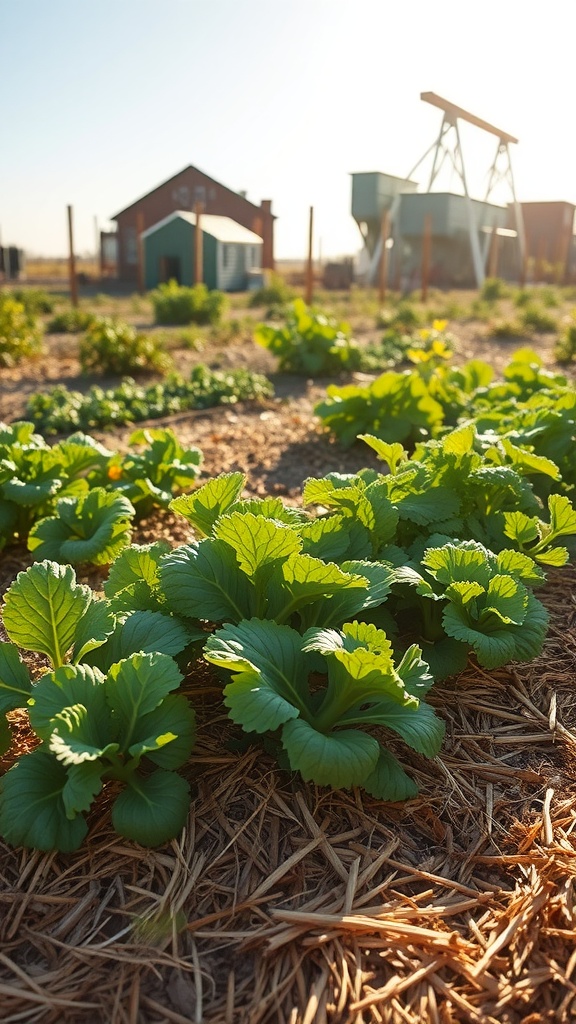
Using straw as a mulch is a fantastic way to keep your garden healthy and vibrant. In the image, you can see lush green plants thriving in a garden setting, surrounded by a thick layer of straw. This natural barrier not only looks great but also helps in many ways.
Straw acts as an effective weed barrier, preventing pesky weeds from stealing nutrients and water from your plants. It also holds moisture in the soil, which is essential during dry spells. As it decomposes, straw enriches the soil, adding organic matter and improving soil structure.
Another benefit of using straw is its sustainability. It’s a byproduct of grain production, making it an eco-friendly option. You’re not only creating a beautiful garden but also contributing to a more sustainable way of gardening.
If you’re considering using straw in your garden, spread a thick layer around your plants, making sure to keep it away from the stems. This method allows your plants to breathe while protecting their roots. Straw mulching is a simple yet effective way to create a thriving garden.
Geotextile Fabrics for Enhancing Soil
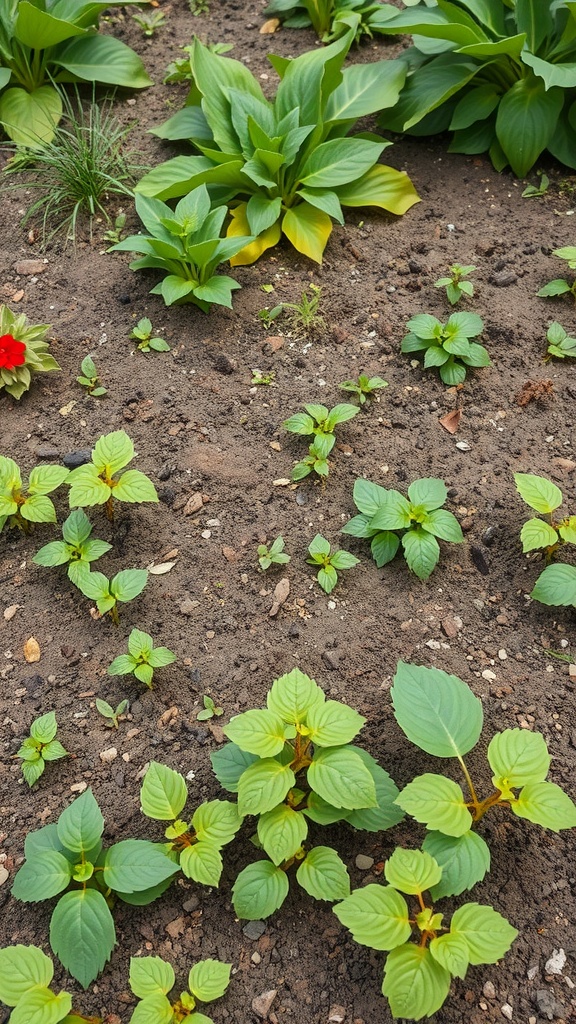
Geotextile fabrics are a fantastic tool for gardeners looking to improve their soil health. This image shows a garden area where various plants are thriving in rich soil. The lush greenery indicates that these plants are getting the right nutrients and support.
Using geotextile fabrics helps prevent weeds from taking over while allowing water and nutrients to reach the soil. This is crucial for keeping your garden healthy and productive. The fabric acts like a barrier, making it easier for the plants to grow without competition from unwanted weeds.
As seen in the image, the arrangement of plants shows how well they can coexist when the right materials are used. It’s all about creating a balanced environment where plants can flourish with the help of geotextiles. This method can lead to a beautiful, thriving garden.
Plastic Sheet Method
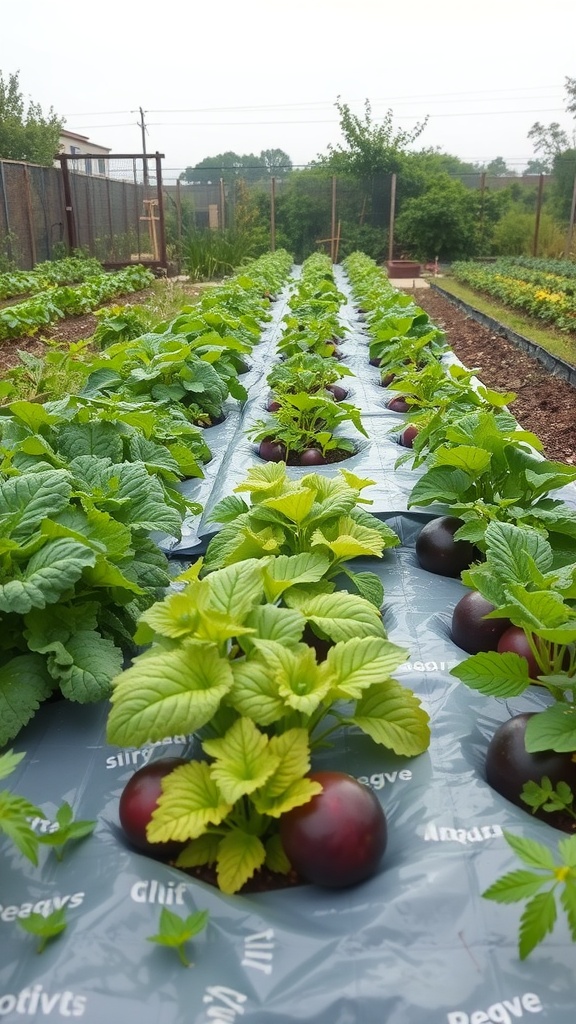
The plastic sheet method is a practical way to keep weeds at bay while promoting healthy plant growth. In the image, you can see a neat row of plants growing through holes in a plastic sheet. This helps protect the soil and the roots from pesky weeds.
The plastic acts as a barrier, blocking sunlight that weeds need to grow. This means less time spent weeding and more time enjoying your garden. As the plants grow, they thrive without competition for nutrients.
Using this method also retains moisture in the soil. This is a big plus, especially during hot weather. The plastic helps keep the soil temperature steady, creating a perfect environment for your plants.
For best results, select a durable plastic that won’t break down too quickly. Make sure to cut holes that fit your plants well. This will help them grow strong while keeping weeds at bay. Overall, the plastic sheet method is simple yet effective for any garden enthusiast looking to save time and effort.
Innovative Uses of Old Carpets
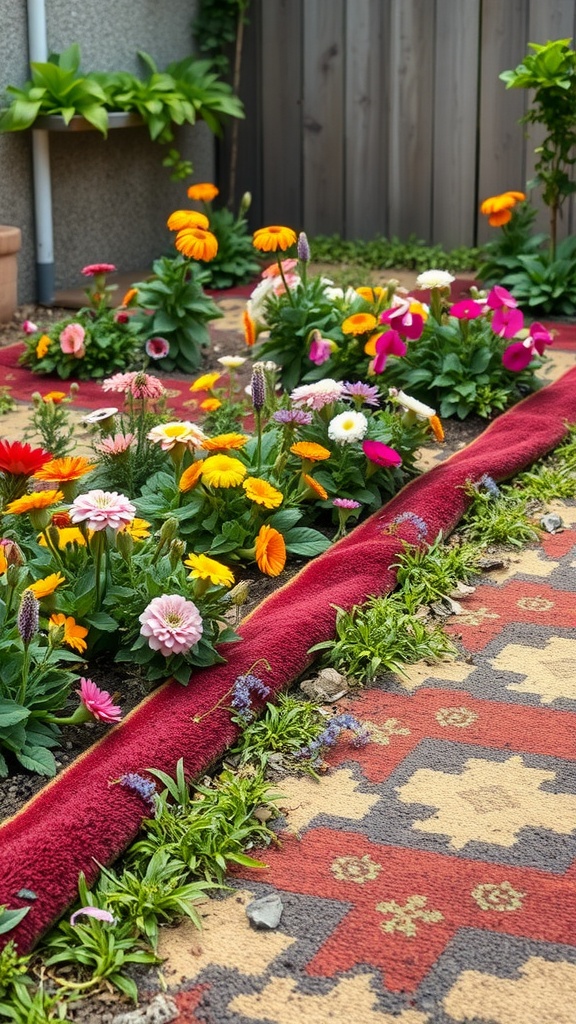
Old carpets can find a second life in your garden. In the image, you see vibrant flowers surrounded by remnants of carpet on the ground. This colorful display not only adds an artistic touch but also serves a practical purpose.
Using old carpets as weed barriers is a fantastic idea. They can help suppress the growth of unwanted plants while allowing the flowers to flourish. The red pieces in the photo create a stunning contrast against the blooms, making the garden pop.
Moreover, carpets can protect the soil from erosion. When laid down, they keep moisture in and prevent soil from washing away during heavy rain. This way, your plants get the best care while looking great.
So next time you replace your carpets, think twice before tossing them out. They may just be the perfect solution for your garden needs!
Landscape Timbers for Structure
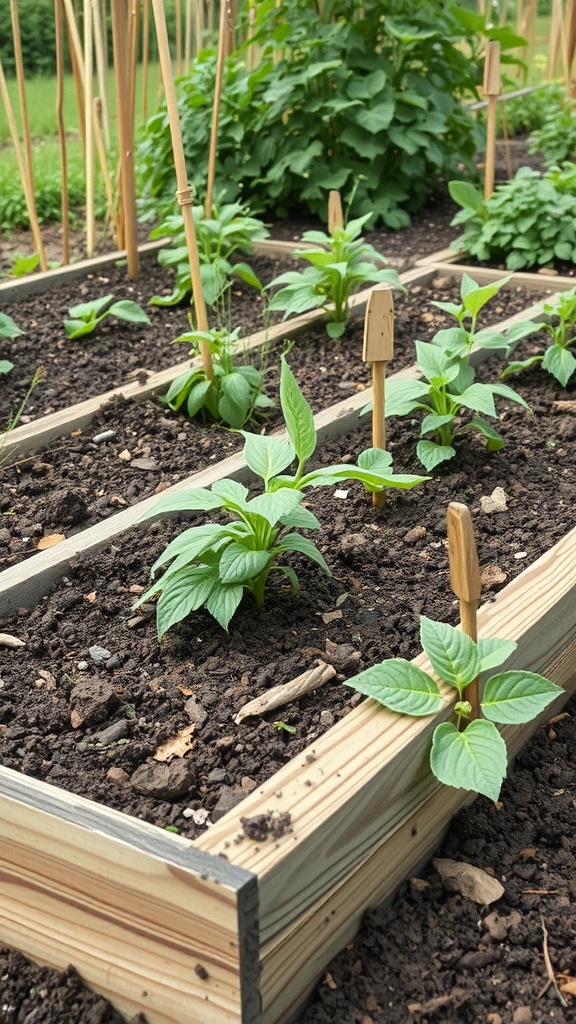
Landscape timbers are a fantastic choice for creating structured garden beds. They not only provide a clean, defined look but also help keep soil in place. In the image, you can see raised beds made from timbers, enhancing the garden’s appeal.
These wooden frames act as barriers, preventing weeds from spreading into your carefully cultivated plants. The timbers support a variety of plants, making them perfect for vegetable or flower gardens. Plus, they add a rustic charm to your outdoor space.
Using landscape timbers is simple. Just stack and secure them into the desired shape, fill with soil, and start planting. It’s a straightforward way to elevate your gardening game!
